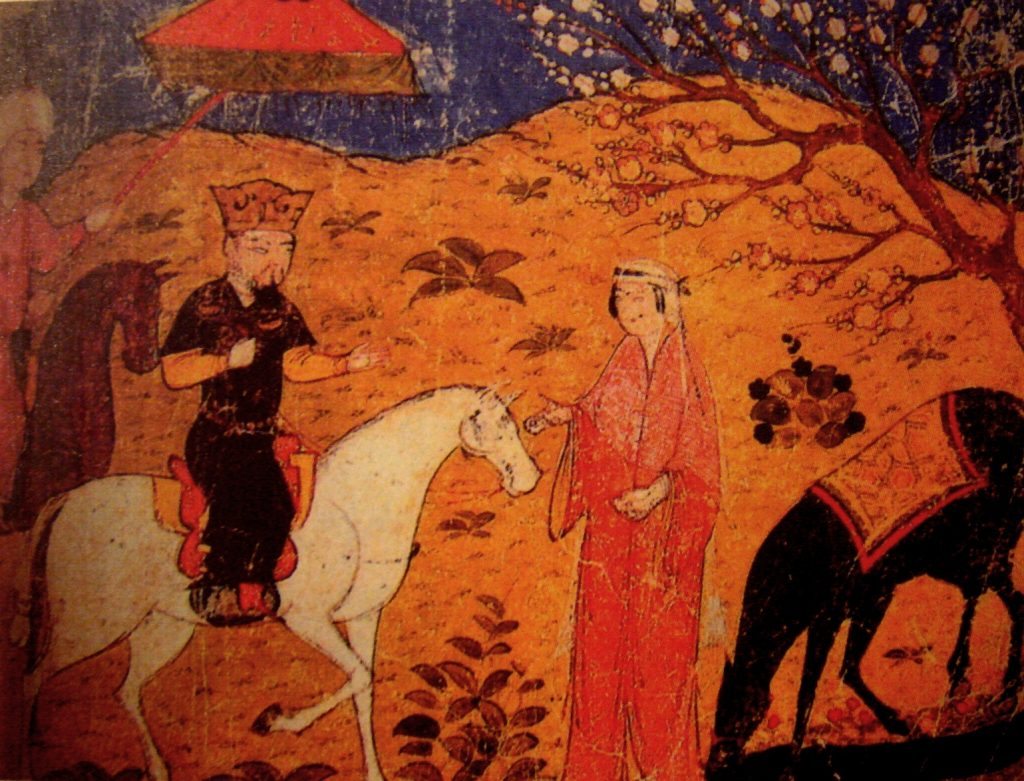French pains d’épices
12.09.2016
Septième ilkhan de Perse, l’illkhanide Ghazan Mahmud Khan (1271-1304) était l'arrière-petit-fils d’Houlagou Khan (lui-même petit fils de Genis Khan), fondateur des la dynastie mongole des Houlagides (ou Ilkhanides).
French pain d’épices is an ancient tradition. There was even a French pains d’épices guild by the end of the XVIth century. Going further back, its origins become more diverse and include Ancient Egyptian, Greek, Roman, Chinese, Middle Eastern and Central European influences, all of which are legitimate.
As bread is very diverse in nature due to the variety of flour and recipes used, spices are just as diverse and honey is known in all cultures. So it comes as no surprise that these three ingredients would end up together. Honeyed spiced bread has been consumed in countries far and wide for millennia. What is clear however is that none of these spiced breads were the same. In Greece they were made using sesame flour and were known for their sweetness and wholesomeness. The Romans also ate them for their wellbeing, but the poor kept them as offerings to the Gods as honey was seen as a precious ingredient. This was a lovely delicacy which was not to be confused with sourdough honey bread made from barley flour baked in olive oil that was touted by Hippocrates for convalescence purposes.
It is believed however that the French pain d’épices originated from Mi-Kong, Chinese honey bread made from wheat flour. For all our ancient ancestors, sugary foods were rare, therefore all the more special. This Chinese bread would have been eaten by soldiers during Genghis Khan’s campaigns in the XIIIth century. Their invasions would have brought it to the Arab world. The Christian crusaders would then have taken it to Europe. It would then have spread from monastery to monastery in the Holy German Empire, where it was called « Lebkuchen ». But it wasn’t until two centuries later in 1453 that it became part of the Christmas festivities in Alsace via the conduit of Cistercian monks at Marienthal. The bread had now reached France. The story also goes that it was brought to France from Flanders by Philip the Good.
This bread was very popular at the French court in the XVth century. Agnès Sorel, a favourite of Charles VII, was crazy about it, as well as Margaret, the sister of Frances 1st. In the XVIth century the story goes that during the reign of his son Henry II, the Italians in Catherine de Medicis’s entourage were rumoured to be using the bread’s spicy taste to mask the taste of poison, and as a consequence this delicacy was suddenly regarded with suspicion. In 1571 the bakers of French pains d’épices launched their guild, officially recognised by Henry IV in 1596 and it was during the following century under the reign of Louis XIV, and his mellifluous courtesans – that the sweetly hidden delights of this spicy bread found favour again. Every country in Europe has its own spin on it. For the French, it is soft, velvety and moist whereas in the North it is decidedly spicier. Made with wheat flour it is a « boichet », made from millet flour it is « gaulderye bread », but rye flour would end up ruling the roost. In France, Reims pain d’épices became mouth-wateringly top of its game due mainly to the inclusion of honey from Champagne.
It was however in Northern Europe that pain d’épices became the most popular. Associated with Christmas festivities, it features in a major way in fairytales such as Hansel and Gretel by the brothers Grimm. It was with all this in mind that our candle called Epices et délices in our Winter 2016 Collection came about. But the recipe for pain d’épices that was used for its olfactive element is from Reims.

